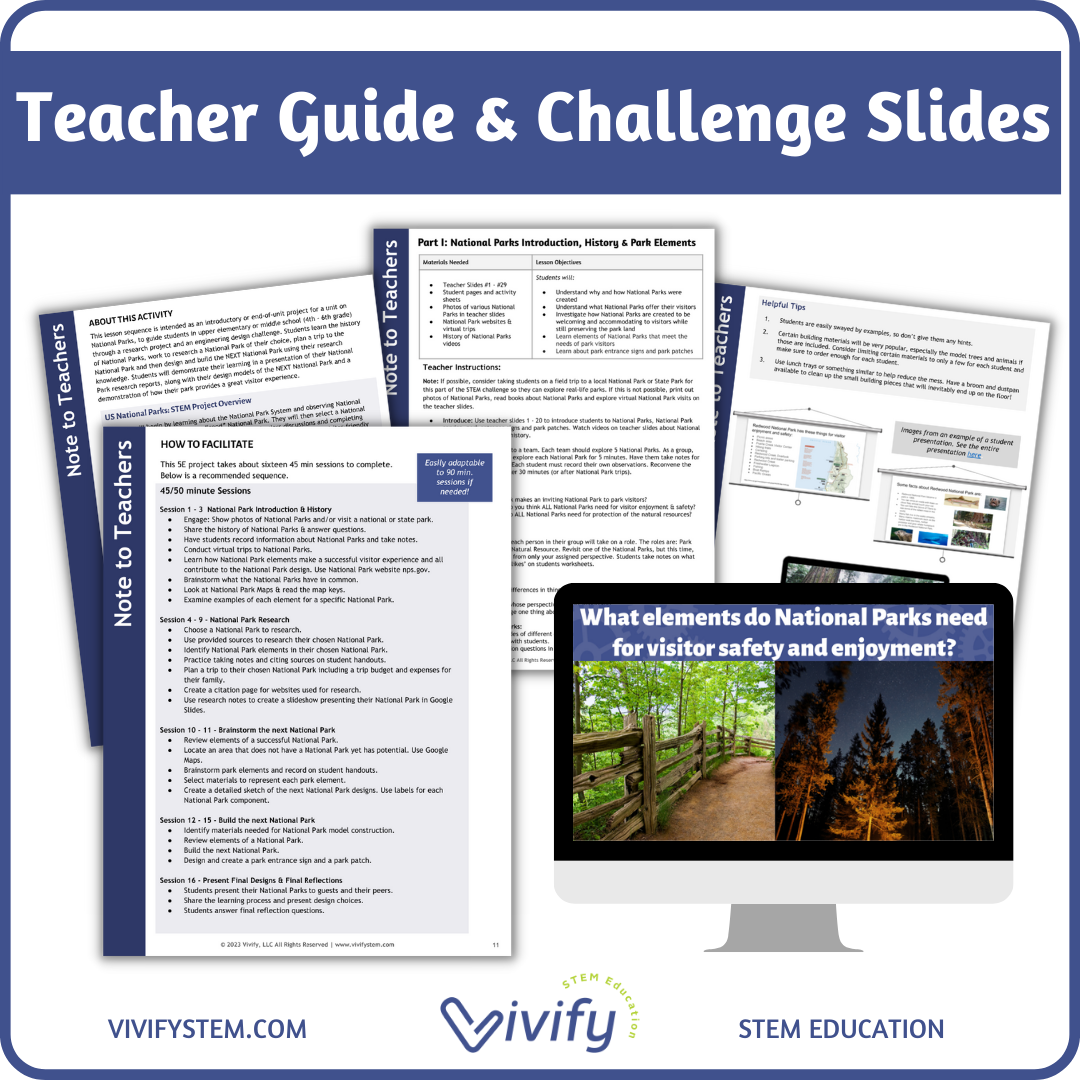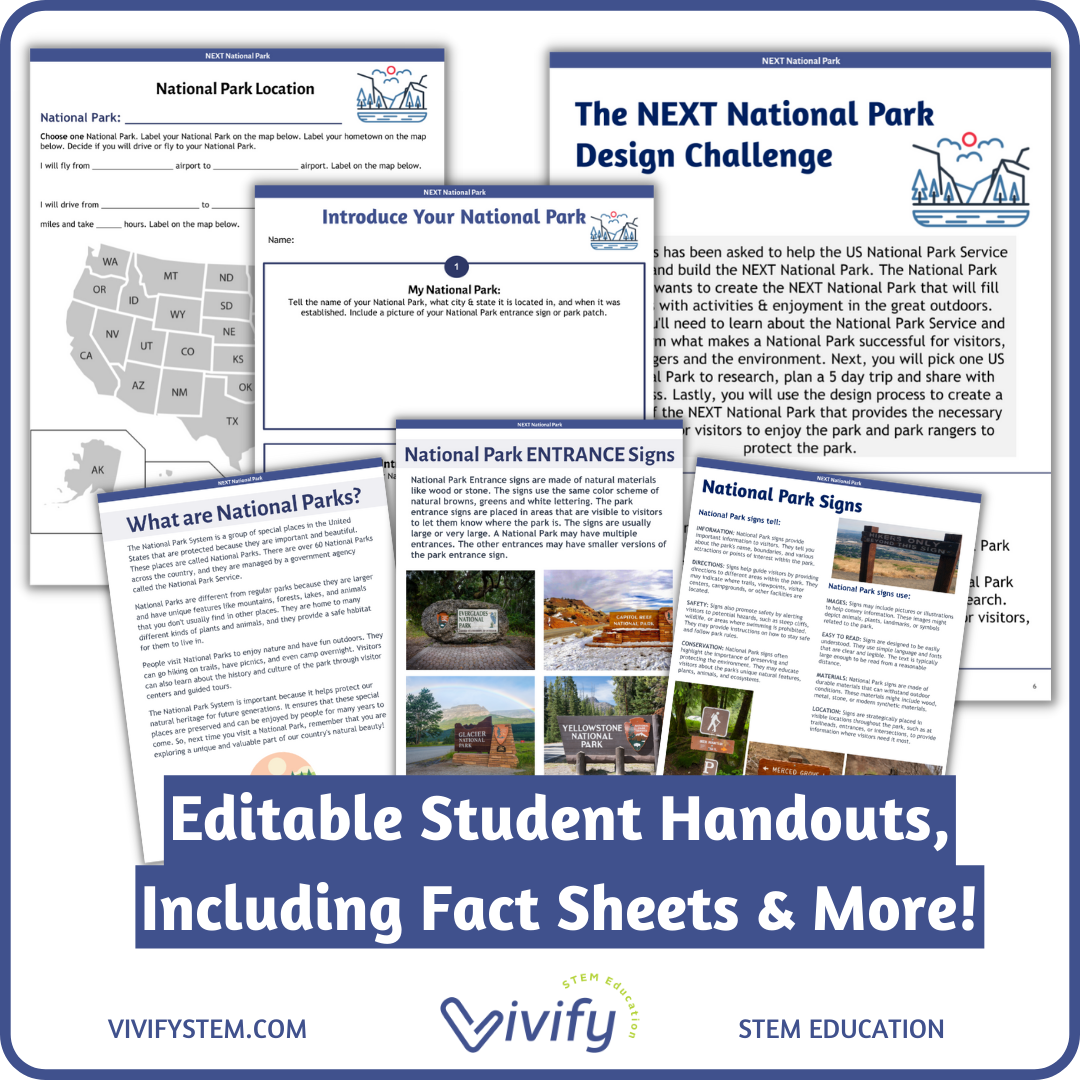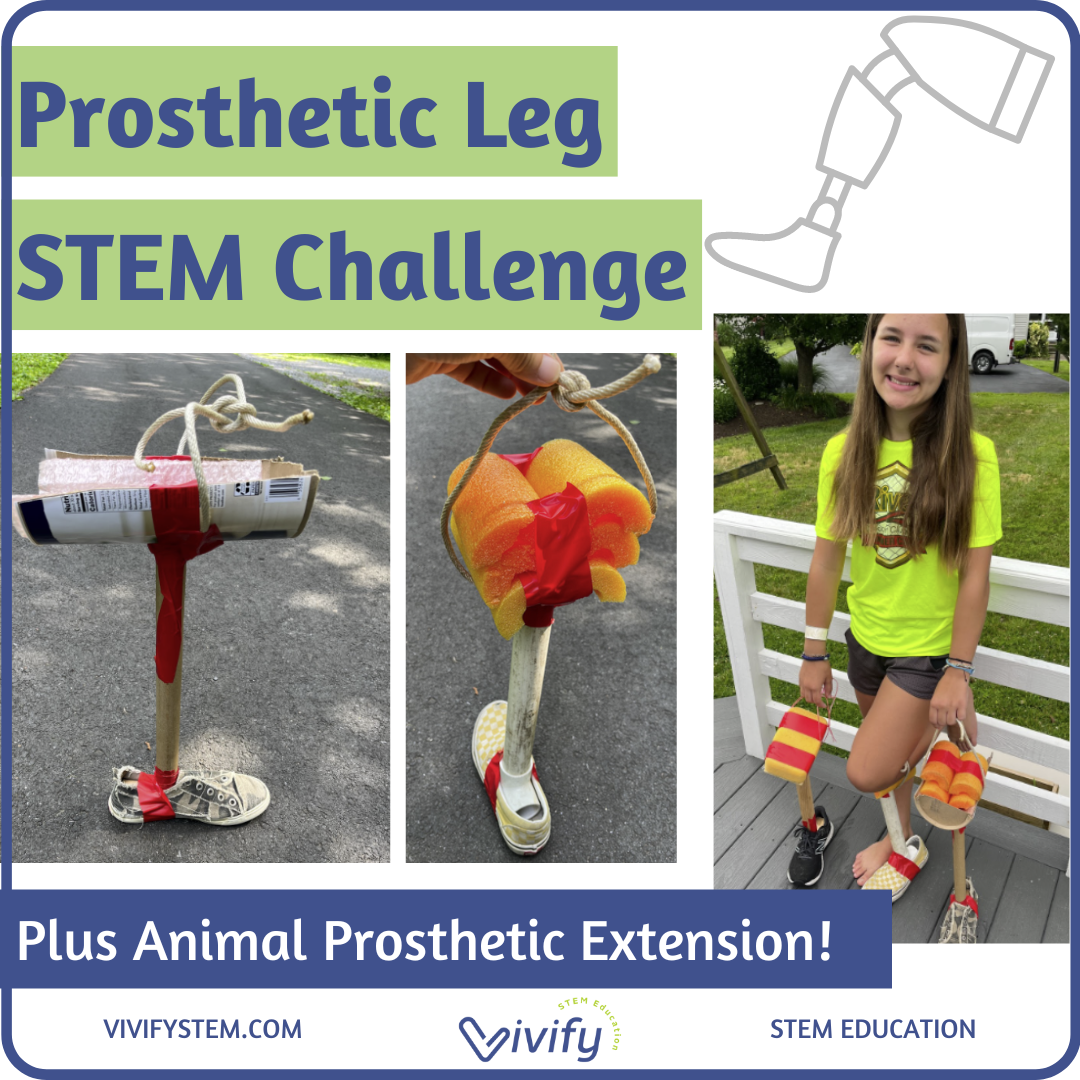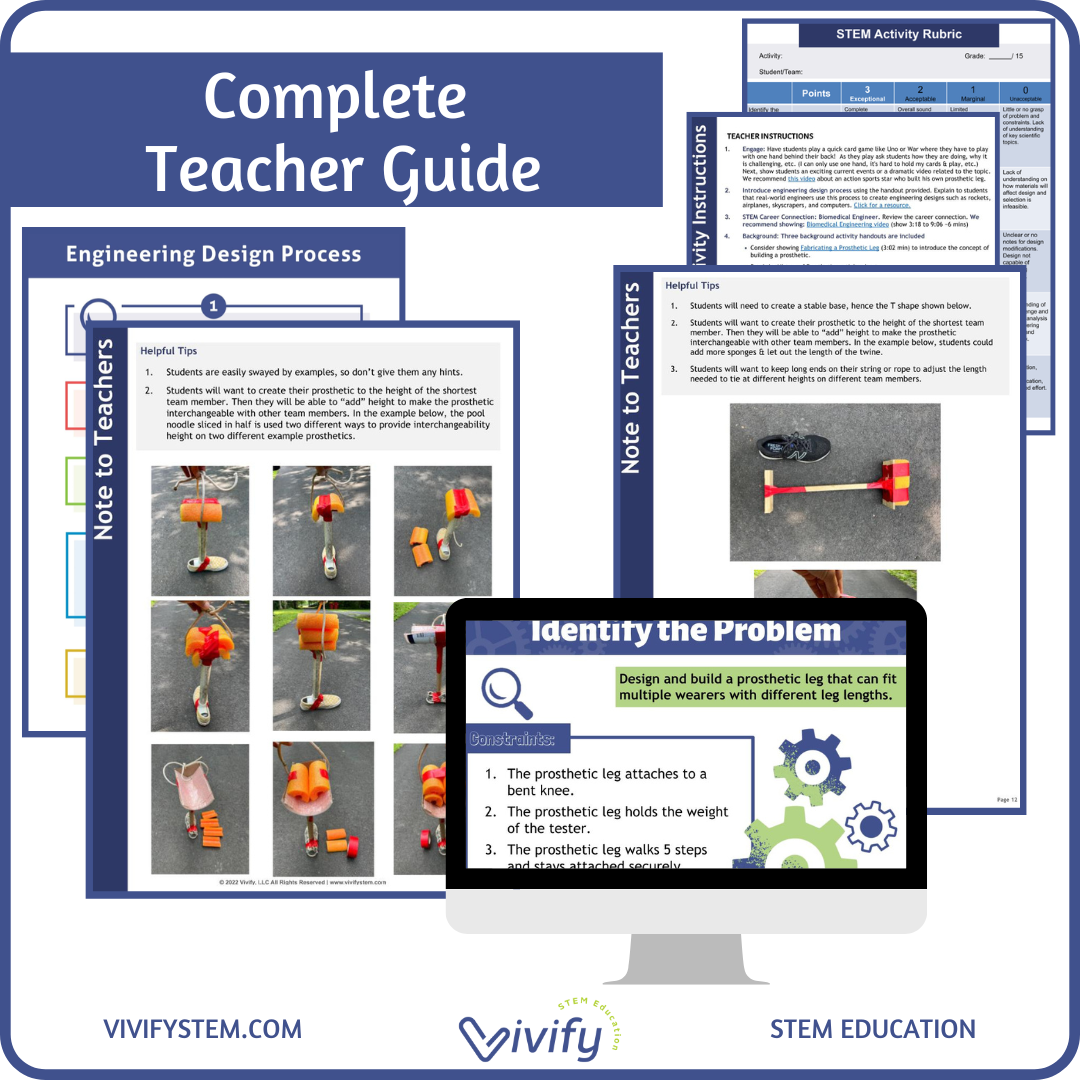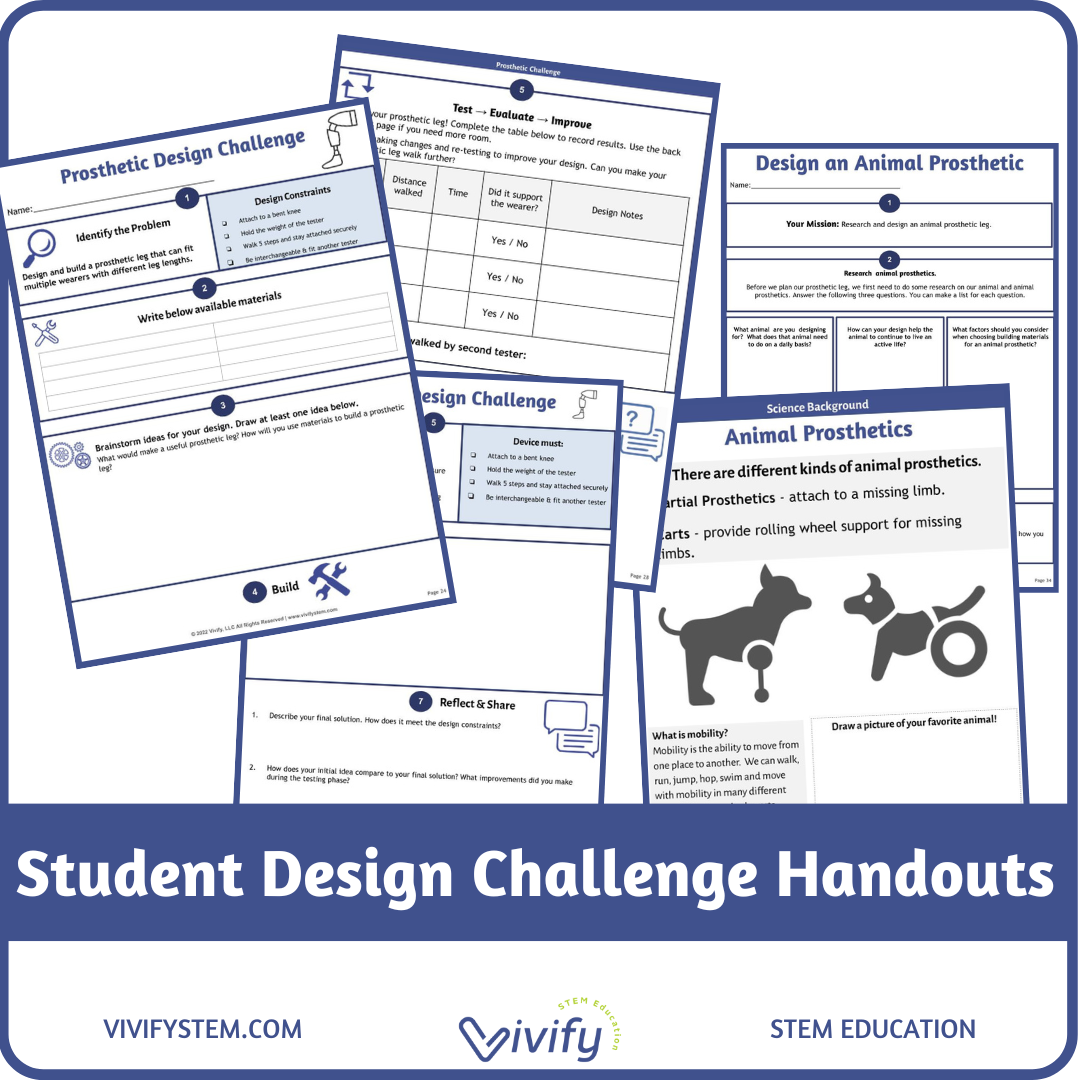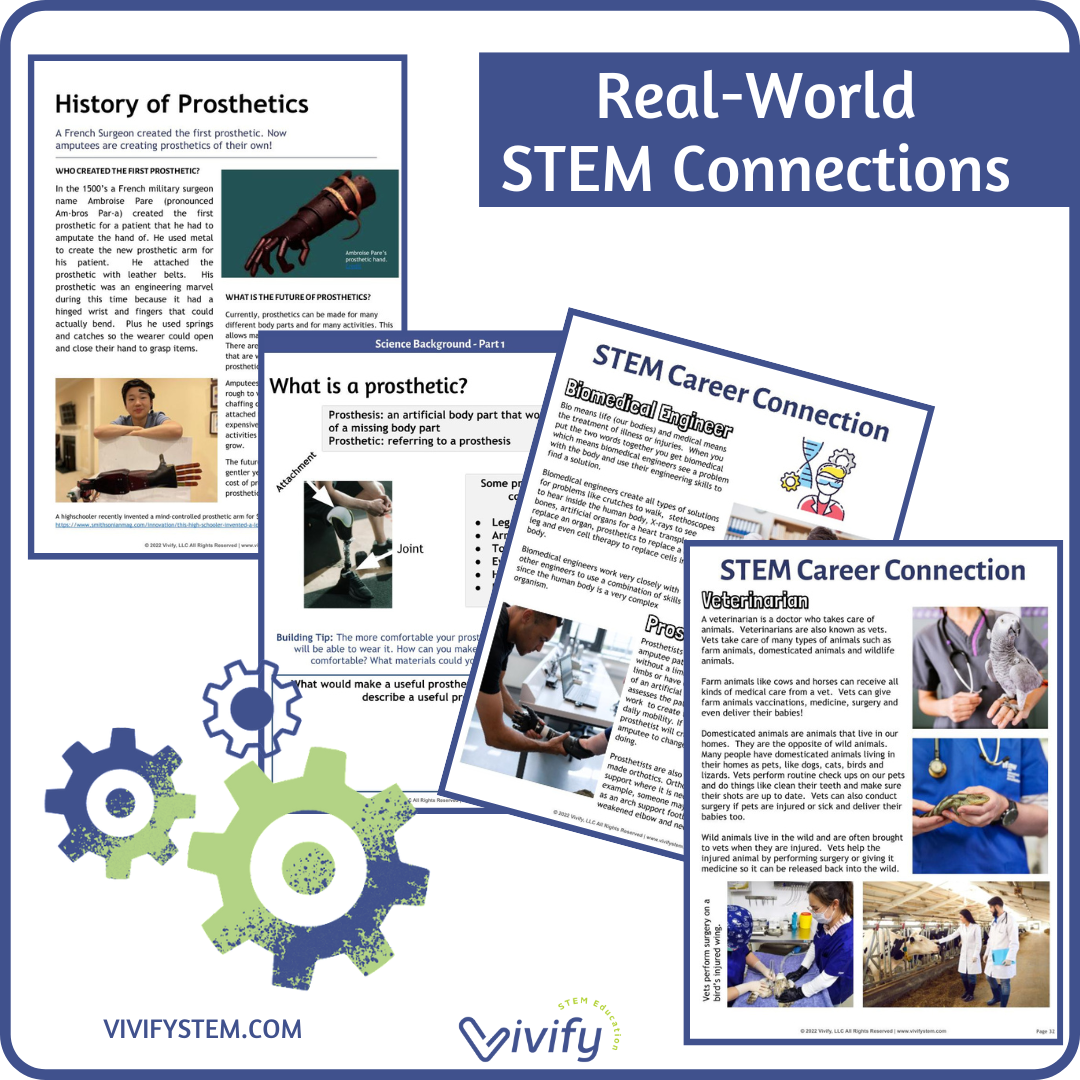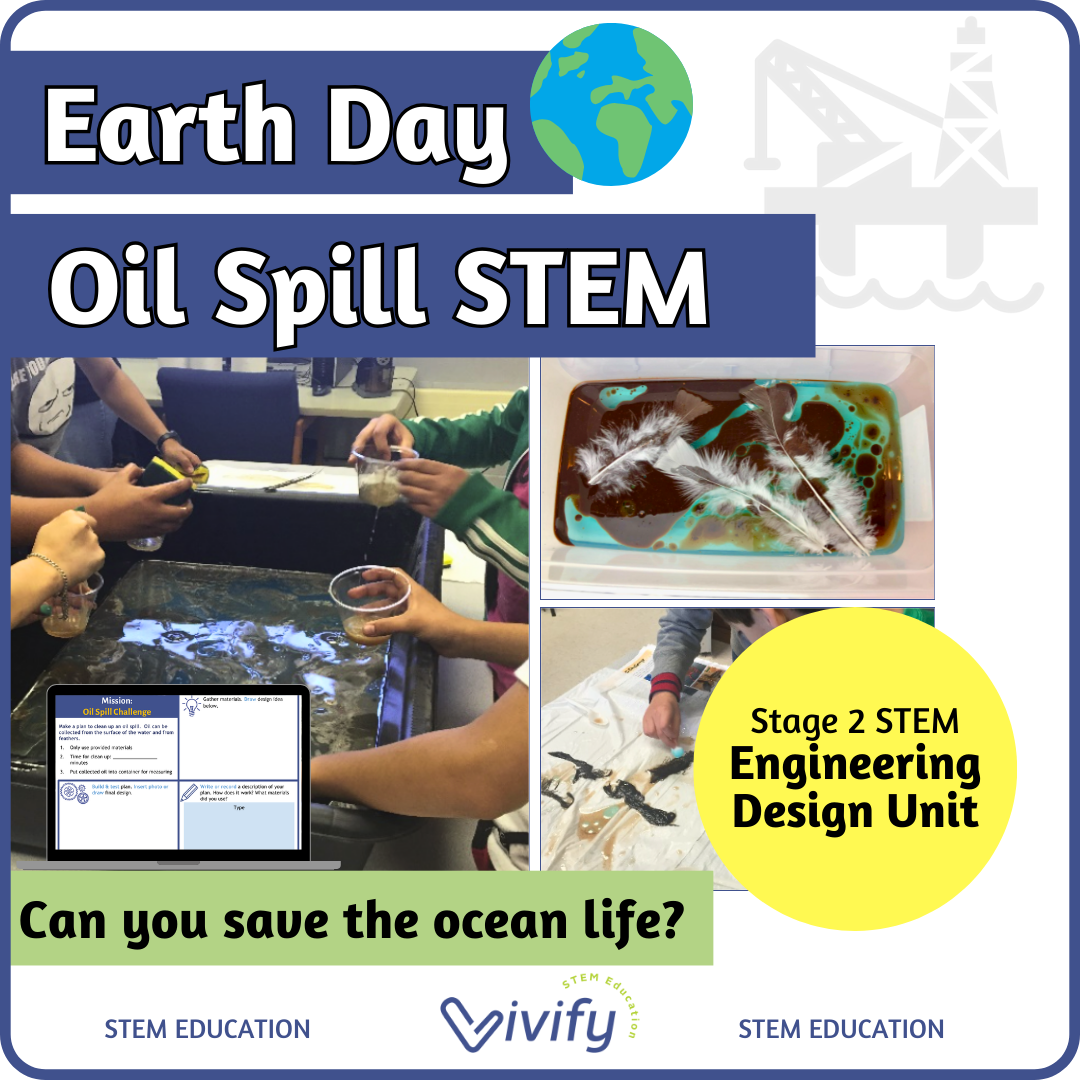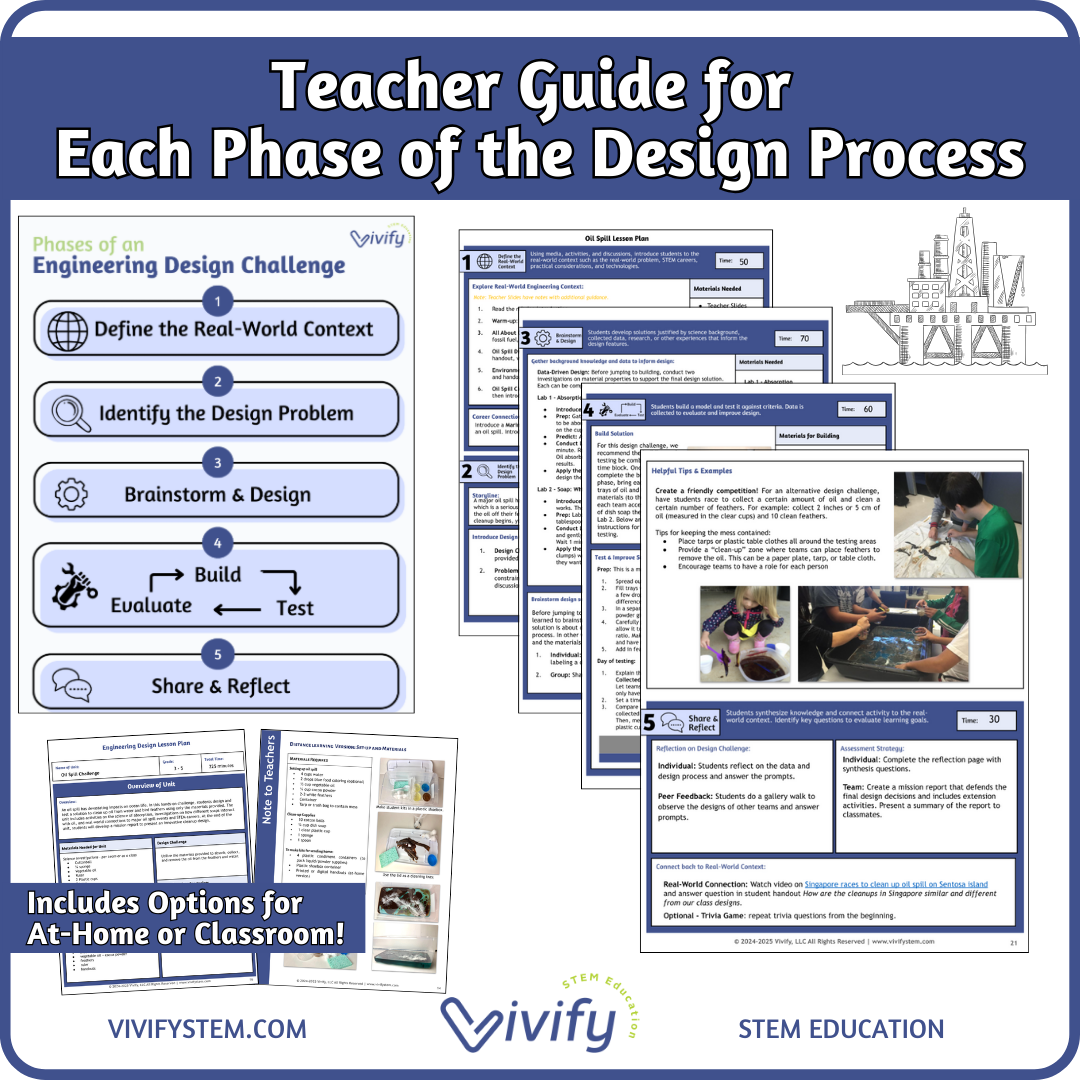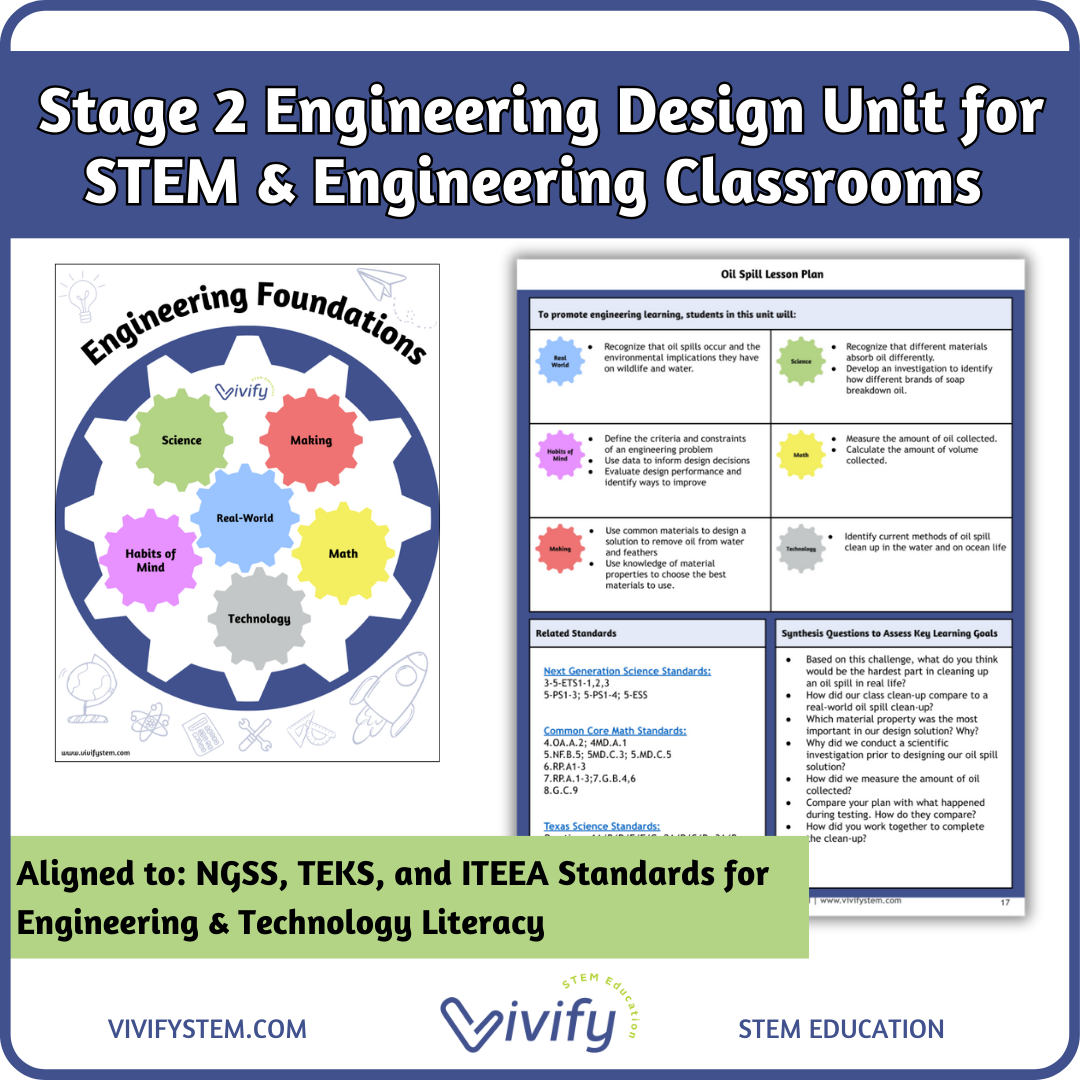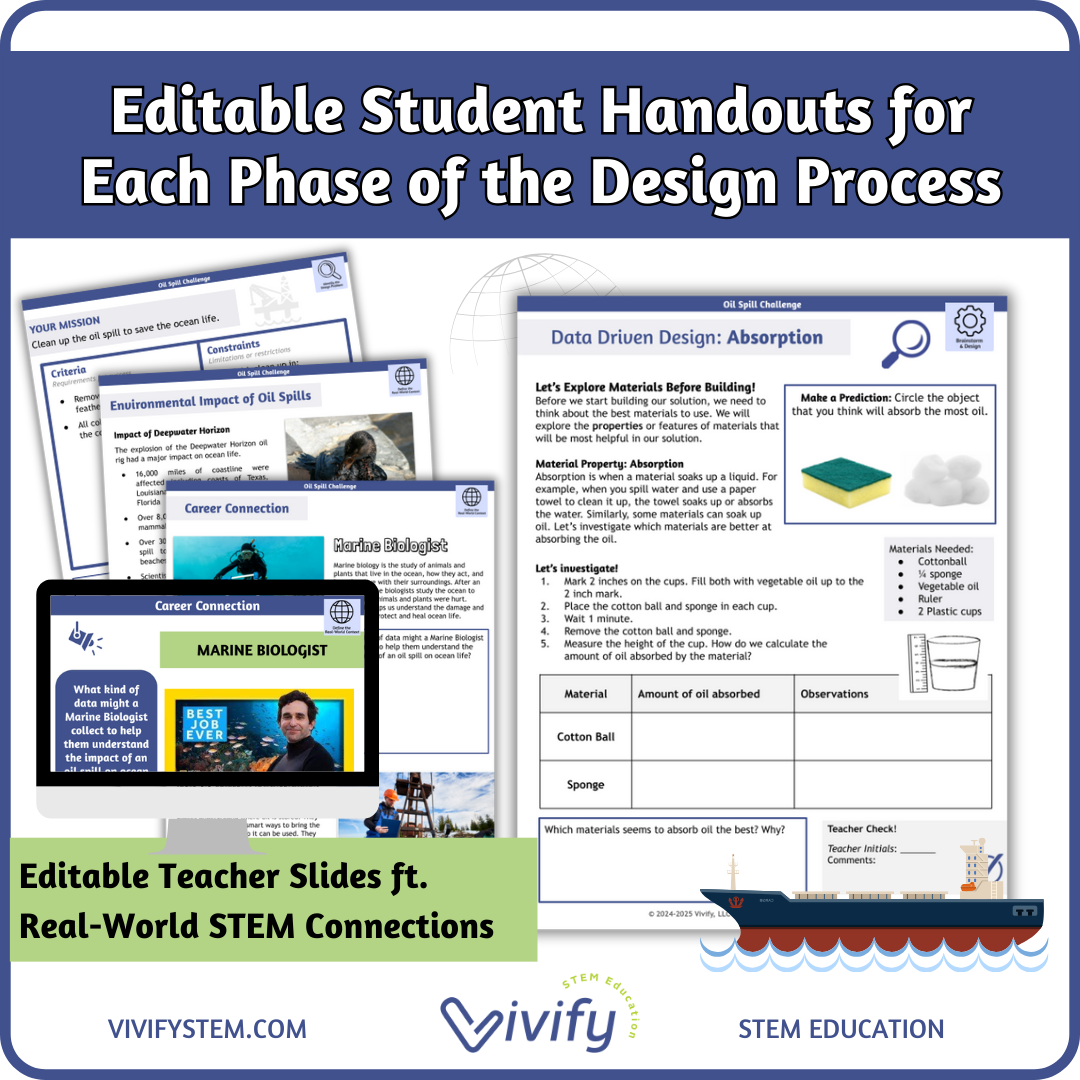National Park Research & Design: 5E STEM Project
Students learn the history of National Parks, work to research a National Park of their choice, plan a trip to the National Park and then design and build the NEXT National Park using their research knowledge!
Grades: 4th - 6th
Students learn the history of National Parks, work to research a National Park of their choice, plan a trip to the National Park and then design and build the NEXT National Park using their research knowledge!
Grades: 4th - 6th
Students learn the history of National Parks, work to research a National Park of their choice, plan a trip to the National Park and then design and build the NEXT National Park using their research knowledge!
Grades: 4th - 6th
Design the NEXT United States National Park! Project Overview:
This lesson sequence is intended as an introductory or end-of-unit project for a unit on National Parks. Perfect for 4th - 6th grade, students will:
Learn the history of National Parks
Conduct a Virtual Field Trip to research and compare parks
Research a National Park, including location, climate, animals, plants, and visitor experience.
Compare perspectives of the visitor, park ranger, and nature
Plan a trip to the National Park, including transportation, activities, and budget
Apply knowledge to design a new National Park, including a park layout, sign, and visitor experience.
5E Learning Cycle Science Unit Includes:
Engage: Intro to National Parks
Explore: Research National Parks, including habitats, safety, and visitor experiences
Explain: Research a National Park, plan a trip, and present a research report.
Elaborate: Design the NEXT National Park
Evaluate: Assess Student Learning with Final Presentation and Reflections
National Park Research Unit Includes:
Teacher guide with detailed instructions, links to resources, and student examples
Editable Teacher Instruction Slides
Editable Student Handouts
Engineering Design Process poster
Editable Rubric
NGSS Standards Alignment
MS-ETS1-1: Define the criteria and constraints of a design problem with sufficient precision to ensure a successful solution, taking into account relevant scientific principles and potential impacts on people and the natural environment that may limit possible solutions.
MS-LTS2-1: Analyze and interpret data to provide evidence for the effects of resource availability on organisms and populations of organisms in an ecosystem.
MS-LS2-5: Evaluate competing design solutions for maintaining biodiversity and ecosystem services.
3-5-ETS-1-2: Generate and compare multiple possible solutions to a problem based on how well each is likely to meet the criteria and constraints of the problem.



